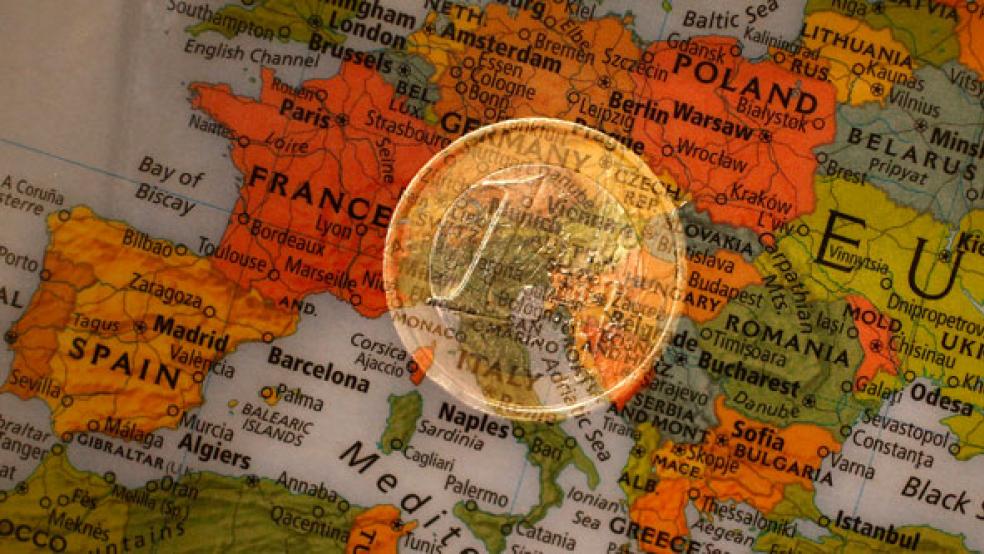Mario Draghi and the European Central Bank president’s announcement of new monetary measures late last week is a shrewd contribution to the fight against sluggish growth and the now-chronic threat of deflation.
The markets had figured for weeks that Mr. “Whatever It Takes” was about to ease into another move. And who could miss the demand--not only in Europe, but also beyond.
Related: UBS Considers Acquisitions to Expand Wealth Management in Europe
Eurozone consumer prices have been consistently soft; last month’s 0.2 percent drop was the first decline since last September. Core inflation, which excludes energy costs, fell from 1 percent to 0.7 percent—leaving Europe that much further from its target of roughly 2 percent.
But Draghi proved bolder this time than most traders and investors had anticipated. Here’s what he’s doing now:
- The ECB, which has spent more than $780 billion buying sovereign assets in the past year alone, now raises its monthly purchases to $89 billion, from $67 billion heretofore. It will also start buying corporate bonds, which brings its asset program, crucially, into the private sector.
- On the interest rate side, Draghi now proceeds further into negative territory. The central bank’s deposit rate will drop 10 basis points, to -0.4 percent. Its principal refinancing rate drops from 0.05 percent to zero; the marginal lending rate—what it costs banks to borrow overnight—goes from 0.3 percent to 0.25 percent.
Related: Daimler Says Brexit Would Be Economically Damaging for Europe
- To counter the damage these rates could cause in the banking sector, Draghi announced something called “targeted longer-term refinancing operations,” or TLTROs. These let banks borrow at the new deposit rate, -0.4 percent, if they are lending to businesses and consumers.
To put this last point another way, the ECB now proposes to pay banks to lend. So with one stone Draghi kills two birds: He introduces a new stimulus measure and avoids weakening banks with his negative interest rate structure.
What Draghi indicated the ECB would not do, received serious attention, too, and Mr. Whatever It Takes put it clearly at a press conference:
Part 1, “Rates will stay low, very low, for a long period of time and well past the horizon of our purchases.” Part 2: “From today's perspective and taking into account the support of our measures to growth and inflation, we don't anticipate that it will be necessary to reduce rates further.”
Related: Western Europe Car Sales Rose 13.8 Percent in February
The markets liked Part 1 but quickly reacted negatively to Part 2: News that this is the ECB’s max on the interest rate side sent the euro up, undesirably; stock prices went down and bond yields rose sharply.
It’s true that negative rates have their limits as a strategy. To take the most obvious problem, banks can’t pass on those rates to retail depositors because there’s no way they’re going to pay banks to hold their savings.
But Draghi responded to this concern. He avoided the multi-tiered rate strategy the Bank of Japan tried and botched, but his TLTROs can work if banks stop holding too high a proportion of cash. As a principle, there’s nothing that says odd or undesirable things automatically occur when interest rates goes south of zero. It depends on what else is going on.
The ECB went into negative territory first, nearly two years ago. For various reasons, Sweden, Denmark, and Switzerland now have negative rate structures. The Bank of Japan adopted negative rates in January.
Related: ECB Package Can't Solve Economic Problems in Europe--Merkel Ally
The Eurozone and these others may or may not share similar fates. What they do apart from monetary policy—i.e., what they do by way of fiscal policy, among other things—will determine who does well and who does otherwise.
The markets are good at buying and selling, but they’re often bad at understanding big-picture economic environments. They panicked when China’s growth numbers began to moderate last summer—precisely in line with its economic progress—and then when oil prices fell at the start of the year.
They panicked yet again after Draghi’s “this is it” announcement Thursday and regained a modicum of composure going into the weekend. Now they worry about the limits of central bank policy, but that’s not what’s worth worrying about anymore.
Factbox: Going Round in Circles: Europe's 10 Migration Dilemmas
Fiscal policy is worth worrying about, now more than ever. I can’t see how anyone could think otherwise after reading the I.M.F.’s new report with its warning about “protracted low global demand” and “a weakening baseline.”
This is not a stealth argument for stimulus spending: It’s an argument for that and much more. We’re not going to uncover what saps so much energy from the global economy until we also address a range of social policies regulating wages, student debt, and other such things.
It’s truly time to do what’s needed to put more money into more people’s pockets. The markets may not think much about this—they appear to be hooked even now on the virtues of austerity policies, which long ago proved a failure.
But this is to assume markets think. They don’t, of course, being inanimate. One certainly can’t assume they know what’s good for them in the medium or long run, and they don’t at the moment.
The I.M.F. and Mario Draghi just made strong arguments for demand management. That’s good for everyone.






